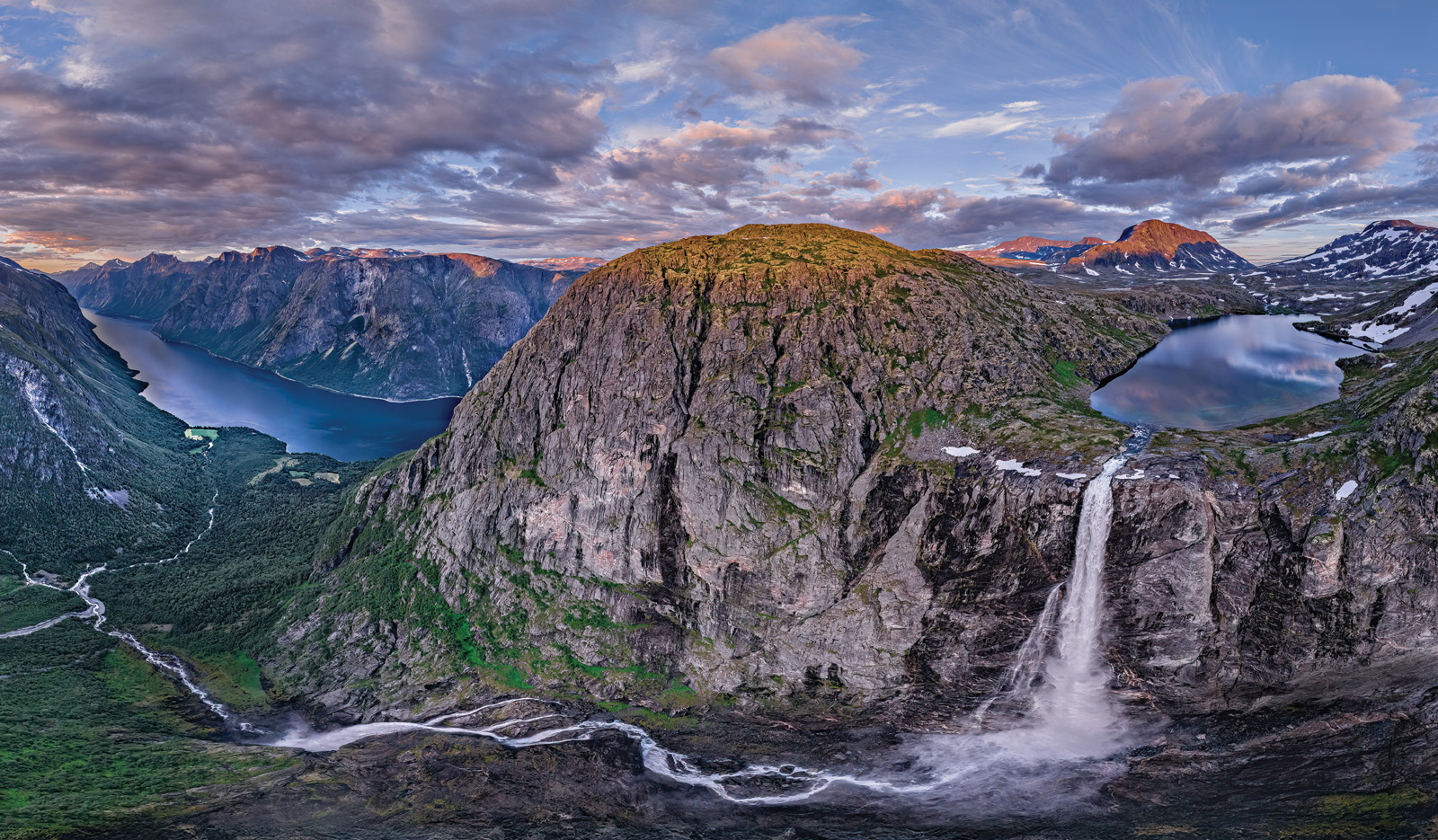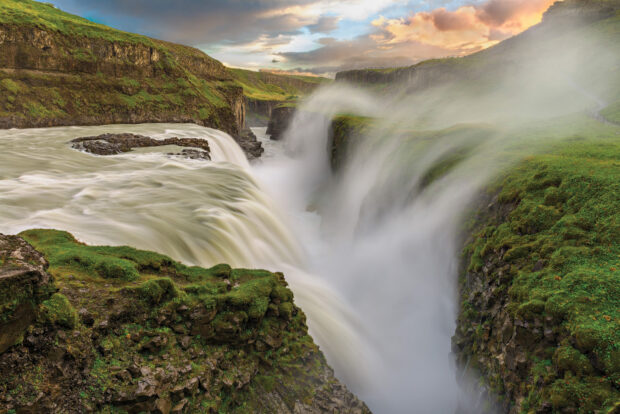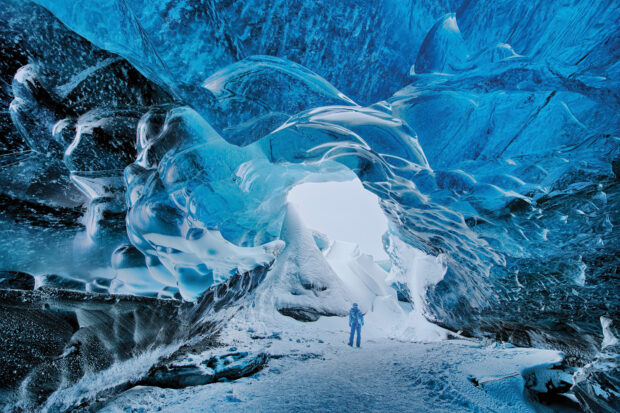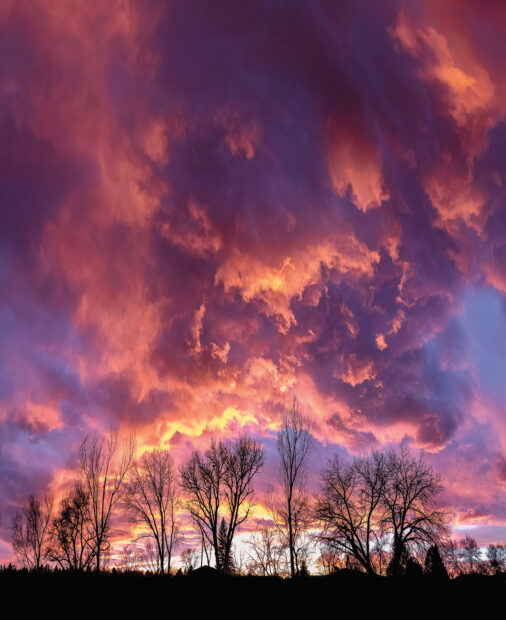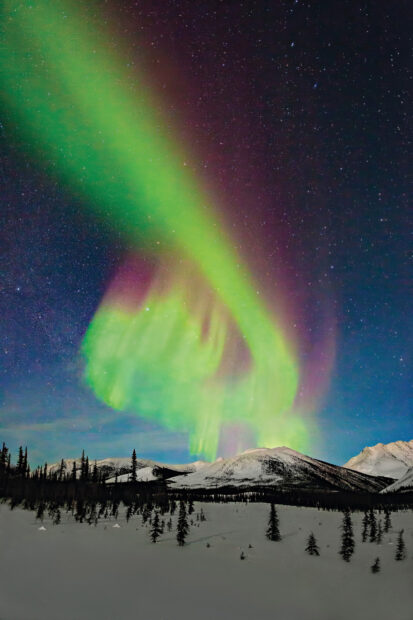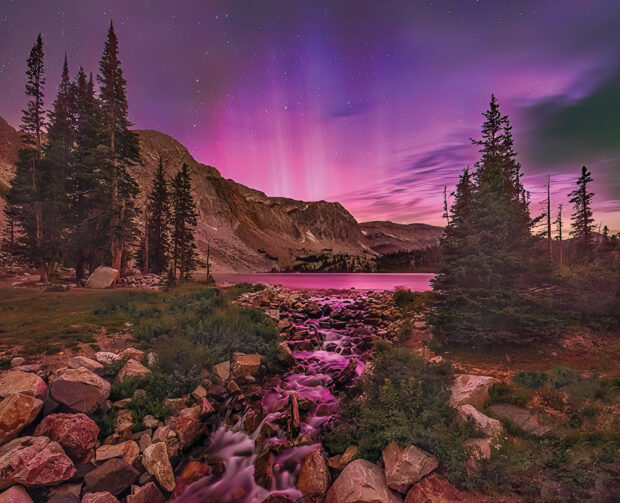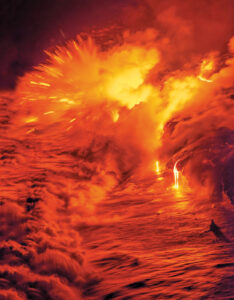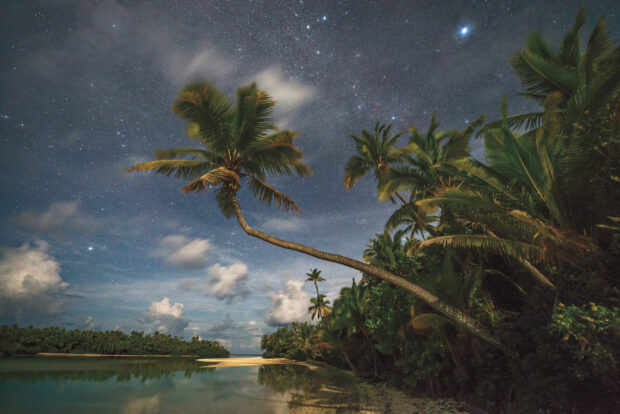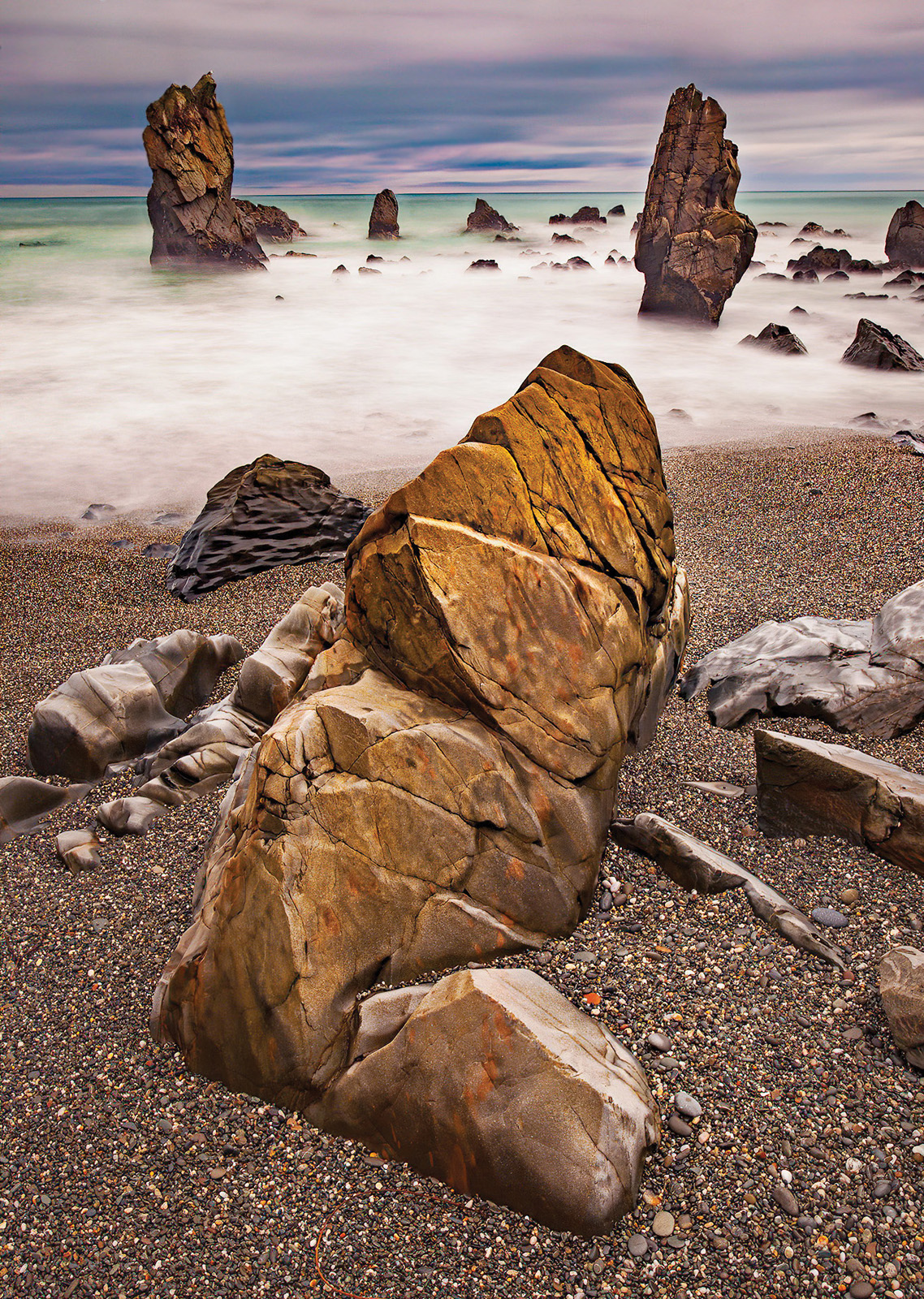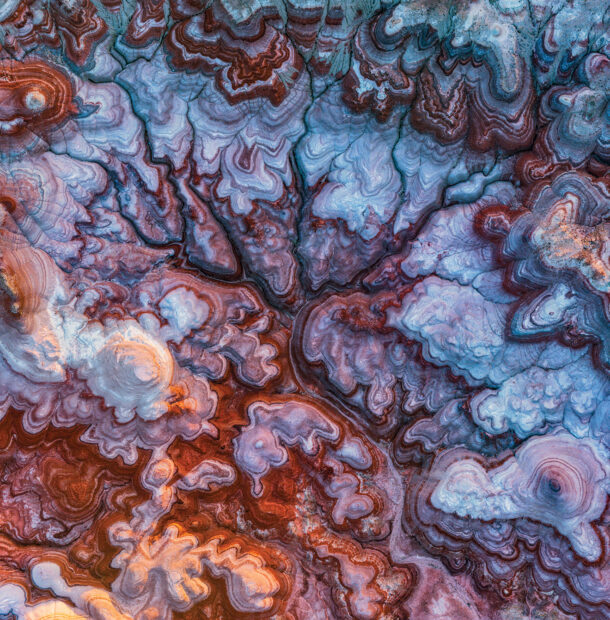Where many tourists seek out spots via Instagram, Collier scans through the satellite images on Google Earth to find destinations farther afield—which is how he landed at Norway’s Mardalsfossen Waterfall. For this particular shot he flew his drone past a cliff face to get a view of the fjord from a perspective that he could never have gotten from the ground.
Gullfoss Falls, Iceland
Shooting in a deep canyon by Iceland’s Hvítá River, Collier had to contend with heavy waterfall mist and 100-mph wind gusts. Every time he snapped a picture he would turn the camera away from the wind, clean the mist off the lens, put the lens cap on, turn the camera back around, compose the image blind, take off the lens cap and immediately take a shot—all while holding down the tripod with his other hand in the Sisyphean hope of somehow keeping it stable.
Vatnajökull Glacier, Iceland
Despite having only spent a few weeks there, Collier puts Iceland at the very top of his list of locations with absolutely jaw-dropping scenery. “There is no place quite like it,” he says. “It’s like something out of a fairy tale.” To get to this ice cave, Collier took a bumpy ride to the base of Vatnajökull Glacier on an all-terrain vehicle with off-road tires that were six feet tall. His girlfriend posed to provide scale for what he described as a “truly otherworldly backdrop.”
Beauty in Your Backyard
Although Collier takes most of his photos far away from big cities, he says that he’s “always on the lookout for magical light that can make any scene come to life.” So when he saw these clouds bursting with color outside his old home in the suburbs of Denver, he quickly set up his camera and tripod in the driveway. After shooting photos for more than three decades, he says he has learned to always be ready to capture moments of beauty. “Sometimes you can find the extraordinary in the ordinary.”
Collier’s first time shooting northern lights, in Fairbanks, Alaska, in 2012 (above), almost swore him off the aurora experience entirely. He waited in vain for five hours in -10°F weather without seeing anything, and was about to leave when he suddenly saw a flicker of green light in the sky. It gradually expanded, appearing like “a dancing apparition in the heavens.” Since then he’s visited multiple countries throughout the world photographing the phenomenon, including the Snowy Range in Wyoming (below).
Four Fun Facts About the Northern Lights
- They power communications. In 1859 a 2-hour telegraph conversation between Boston, Massachusetts and Portland, Maine, was made possible without any battery power—there was enough electric current generated in the telegraph wires due to an aurora borealis happening.
- They may actually make an audible sound. While hard to notice in all but the quietest of settings, Finnish researchers found that the faint sound of “whistles, cracks and hisses” tended to coincide with a temperature inversion—cold air trapped under a lid of warm air. They attribute the sounds to the release of static charge, linked to changes in atmospheric electricity caused by the aurora’s disturbance to Earth’s magnetic field.
- They once nearly caused an international conflict. In 1995 a Norwegian research rocket sent to observe the aurora borealis passed through Russian air space, provoking the Russian military to briefly elevate their forces to high alert.
- Yes, there are “southern lights,” also known as “aurora australis.” The areas where they can be seen are generally less populous than the northern variety, but include parts of Tasmania, New Zealand and rural Australia.
Getting More Pacific
When lava began flowing from the Big Island of Hawaii into the Pacific Ocean (above) in 2016, Collier quickly booked a plane ticket there. The park service had closed the road near the lava, so visitors had to walk four miles to see it. But Collier got crafty, renting an e-bike that got him there in 15 minutes, where he had “a rain-drenched evening marveling at the incredible scene.”
Tapuaetai (above) is one of 22 islands in the Aitutaki Lagoon of the Cook Islands, in Polynesia. It has no full-time residents and just a single house with no electricity or running water and, according to Collier, “far too many mosquitoes.” He rented this house for one night, fulfilling his dream of living—ever so briefly—on a desert island. “When the stars came out at night it was a sight to behold,” he says. “I had to remind myself that I was there to take photographs, and not just sit in reverie.”
Beyond the Landscape
Sometimes camera effects can be your friend. While driving along the rugged west coast of the South Island of New Zealand, Collier spotted some impressive sea stacks (above) in the water. The lighting wasn’t ideal with such an overcast sky, so he used a light-blocking “neutral-density filter” that allowed him to capture long 30-second exposures that blurred the waves and gave the scene a distinctly dreamy effect.
Collier was perusing Google Earth one day when he discovered a curiosity in nearby Utah: the Mars Desert Research Station (above), where scientists spend weeks-long shifts simulating Martian environments, down to the detail of wearing spacesuits and air supply packs. Collier captured the 30-acre space by flying a drone in a grid-like pattern, stitching together more than 200 photos to create the final image. “The beautiful, lifeless landscape really did resemble Mars in such an uncanny and surreal way,” he says.
Grant Collier by the numbers
31 years doing photography
19 countries visited
17 cameras owned
21 books published
220,000 photos taken
Fellow alums who love snapping pics—send us your best nature photos, for potential inclusion on our website and a future issue where we will highlight some of our favorites

